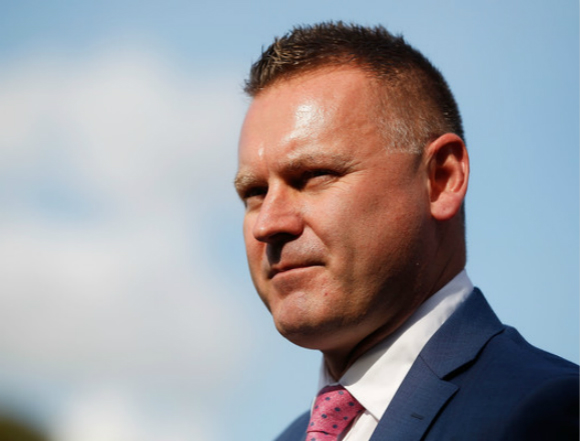The Australian city of Melbourne was able to elevate its status and attract millions of dollars of new revenue to its economy when it made the decision to prioritize its strengths, and focus its objectives on attracting major sports events. Damien de Bohun is the General Manager of Major Events for Visit Victoria, and spearheads Victoria’s quest to lure more major events and retain its status as the nation’s sporting capital. It is a single, unified organisation, working to sell Victoria and Melbourne’s strengths nationally and internationally.
In Melbourne’s case, the effort first started 25 years ago when leaders came together to think of a way to bring more visitors to the city. “It was always a pretty place, but there was no clear sense of what was bringing the visitors,” said De Bohun, a savvy former head of Australia’s premier soccer 'A-League’.
“There was no clear sense of what was bringing visitors to Melbourne. The decision was made that Melbourne would be known for its sporting events. The reason that matters, is that Australia has always been strong in sport, our brand globally has been healthy outdoor lifestyle, but always knew we are good at sport. We had one advantage in that we had the Grand slam tennis tournament, the Australian Open. The next big piece in the jigsaw was securing the Grand Prix Formula 1 race. We decided we would be a leading city for sport, it was our strength to sell. It’s a very traditional city, old money, while Sydney is more cosmopolitan, so we had to decide how we could compete. We needed to be running more major events. We became clear on our objectives. “
The key elements a host city needs to put in place may not always be obvious said De Bohun. For China’s second, third and fourth tier cities, he suggests to explore what the city stands for.
“It’s not always obvious,” he said. “Then you get a sense of what market your appealing to, and pick specific events. Be very targeted about the event you pursue and then do one well, which is better than doing two poorly. You need to be clear on your objective. Sounds simple, but very important.”
So, the question is, how does a city grow as a sports tourism destination once you have secured a few big events? De Bohun says Melbourne’s objective now is to grow the ‘visitor economy’.
“Our job is to make sure more people come to Melbourne, and that more people stay longer. It started out as ‘we’re going to be good at events’, and now it has become our second most important export. Education is the number one, our universities are very strong, and now it is the visitor economy. Our target is AUS$37.5billion. It’s not small, it’s a big target that we are trying to achieve.”
But, how can a host city prioritize where it should invest? De Bohun says the visitor economy influences what you are prepared to invest in, and what you focus on. As an example, securing the Argentina v Brazil football match was very important he says.
“We knew people from outside Melbourne and overseas would come. We want to make sure people in Melbourne can enjoy our events, but it is more important for people from outside Melbourne to come and visit for these events and help grow the economy. We’re really clear on our objective, which helps us to make decisions on where we will invest, how much, and what that looks like.
So, what’s a good example of identifying a target event and making it work as a viable investment? De Bohun says Melbourne organisers receive criticism about what is spent on the Formula 1 Grand Prix race. De Bohun says research shows it’s justified.
“It’s a five-hour advertisement for the city. It’s stunning blue skies and the track runs around the lake at the doorstep of the city. We work out what it would cost, to have that kind of advertising if you were to pay for it. The answer is hundreds of millions of dollars, so this means the investment is good value.”
Melbourne has now fully integrated sports event hosting with its visitor economy, and it has been voted the most livable city in the world six years in a row.
“It has clear skies and is very safe, and it’s a better lifestyle. Everyone is moving to live in Melbourne. It will be the biggest city in Australia soon, in about five years time.
“We integrated all aspects of promoting Melbourne as a destination under one Victoria province umbrella. Major events, tourism and business events have all been brought together under ‘Visit Victoria’. It is not a government department any more, which was deliberate, which makes it more commercial, and so more nimble. Ten years ago it would not be possible to be outside of government. Now, the government is still the main funding source for our events, but we now have an independent board and budget. Shifting the three elements of sports events, tourism and business events into one entity, was a very important shift.”
Eventually De Bohun says, the effort needs to separate from government to mature. “In the first instance, the effort needs government support, especially when building up in the early years, as for a private enterprise alone it would be too difficult.”
“That’s the purpose of creating Visit Victoria, to integrate it all together, the sports, the stadiums, the food and wine, fashion, and comedy festivals all in one entity. Visitors to the Australia Open tennis get a free ticket to the nearby Arts Centre and learn about indigenous art. The city also launched the fashion festival at the Australia Open tennis final this year. It’s a good example of integrating activities. Every quarter of the year, we get the chief executives in all these fields together to have these conversations.”
